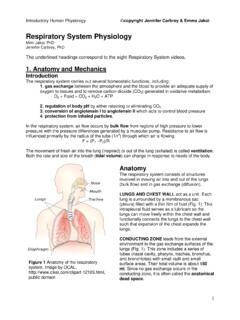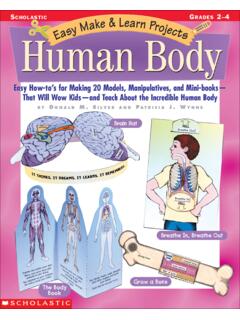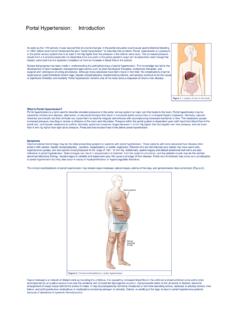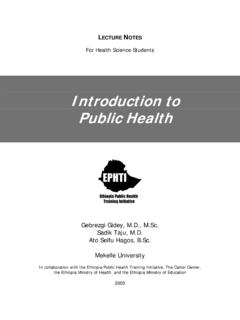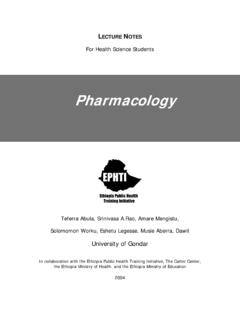Transcription of LECTURE 06: PHONETICS AND PHONOLOGY - Picone Press
1 Return to Main Objectives Definitions: PHONETICS and PHONOLOGY English Transcription Standards Comparison PHONETICS : The Vowel Space Formant Frequencies Bandwidth Summary: Acoustic Theory Consonants On-Line Resources: Ladefoged's Home Page Peterson-Barney Data HLT Central LECTURE 06: PHONETICS AND PHONOLOGY l Objectives: m Linguistics 101 m Understand the relationship between acoustic models of speech production physiology and linguistic models of language m Introduce potential acoustic units for our speech recognition system m Understand how linguistic structure influences our approaches to speech recognition Note that this LECTURE is primarily based on material from the course textbook: X.
2 Huang, A. Acero, and Hon, Spoken Language Processing - A Guide to Theory, Algorithm, and system Development, Prentice Hall, Upper Saddle River, New Jersey, USA, ISBN: 0-13-022616-5, 2001. In addition, information from: J. Deller, et. al., Discrete-Time Processing of Speech Signals, MacMillan Publishing Co., ISBN: 0-7803-5386-2, 2000. has been used. Return to Main Introduction: 01: Organization (html, pdf) Speech Signals: 02: Production (html, pdf) 03: Digital Models (html, pdf) 04: Perception (html, pdf) 05: Masking (html, pdf) 06: PHONETICS and PHONOLOGY (html, pdf) 07: Syntax and Semantics (html, pdf) Signal Processing: 08: Sampling (html, pdf) 09: Resampling (html, pdf) 10: Acoustic Transducers (html, pdf) 11: Temporal Analysis (html, pdf) 12.
3 Frequency Domain Analysis (html, pdf) 13: Cepstral Analysis (html, pdf) 14: Exam No. 1 (html, pdf) 15: Linear Prediction (html, pdf) 16: LP-Based Representations (html, pdf) Parameterization: 17: Differentiation (html, pdf) 18: Principal Components (html, pdf) ECE 8463: FUNDAMENTALS OF SPEECH RECOGNITION Professor Joseph PiconeDepartment of Electrical and Computer EngineeringMississippi State Universityemail: 601-325-3149; office: 413 SimrallURL: speech understanding systems merge interdisciplinary technologies from Signal Processing, Pattern Recognition, Natural Language, and Linguistics into a unified statistical framework.
4 These systems, which have applications in a wide range of signal processing problems, represent a revolution in Digital Signal Processing (DSP). Once a field dominated by vector-oriented processors and linear algebra-based mathematics, the current generation of DSP-based systems rely on sophisticated statistical models implemented using a complex software paradigm. Such systems are now capable of understanding continuous speech input for vocabularies of hundreds of thousands of words in operational environments. In this course, we will explore the core components of modern statistically-based speech recognition systems.
5 We will view speech recognition problem in terms of three tasks: signal modeling, network searching, and language understanding. We will conclude our discussion with an overview of state-of-the-art systems, and a review of available resources to support further research and technology development. Tar files containing a compilation of all the notes are available. However, these files are large and will require a substantial amount of time to download. A tar file of the html version of the notes is available here. These were generated using wget: wget -np -k -m A pdf file containing the entire set of LECTURE notes is available here.
6 These were generated using Adobe Acrobat. Questions or comments about the material presented here can be directed to 19: Linear Discriminant Analysis (html, pdf) LECTURE 06: PHONETICS AND PHONOLOGY l Objectives: m Linguistics 101 m Understand the relationship between acoustic models of speech production physiology and linguistic models of language m Introduce potential acoustic units for our speech recognition system m Understand how linguistic structure influences our approaches to speech recognition Note that this LECTURE is primarily based on material from the course textbook: X.
7 Huang, A. Acero, and Hon, Spoken Language Processing - A Guide to Theory, Algorithm, and system Development, Prentice Hall, Upper Saddle River, New Jersey, USA, ISBN: 0-13-022616-5, 2001. In addition, information from: J. Deller, et. al., Discrete-Time Processing of Speech Signals, MacMillan Publishing Co., ISBN: 0-7803-5386-2, 2000. has been used. PHONEMICS ( PHONOLOGY ) AND PHONETICS Some basic definitions: l Phoneme: m an ideal sound unit with a complete set of articulatory gestures. m the basic theoretical unit for describing how speech conveys linguistic meaning.
8 M In English, there are about 42 phonemes. m Types of phonemes: vowels, semivowels, dipthongs, and consonants. l Phonemics: the study of abstract units and their relationships in a language l Phone: the actual sounds that are produced in speaking (for example, "d" in letter pronounced "l e d er"). l PHONETICS : the study of the actual sounds of the language l Allophones: the collection of all minor variants of a given sound ("t" in eight versus "t" in "top") l Monophones, Biphones, Triphones: sequences of one, two, and three phones.
9 Most often used to describe acoustic models. Three branches of PHONETICS : l Articulatory PHONETICS : manner in which the speech sounds are produced by the articulators of the vocal system . l Acoustic PHONETICS : sounds of speech through the analysis of the speech waveform and spectrum l Auditory PHONETICS : studies the perceptual response to speech sounds as reflected in listener trials. Issues: l Broad phonemic transcriptions vs. narrow phonetic transcriptions ENGLISH PHONEMES Vowels and DiphthongsPhonemesWord ExamplesDescriptioniyfeel, eve, mefront close unroundedihfill, hit, lidfront close unrounded (lax)aeat, carry, gasfront open unrounded (tense)aafather, ah, carback open roundedahcut, bud, upopen mid-back roundedaodog, lawn, caughtopen-mid back roundaytie, ice, bitediphthong with quality.
10 Aa + ihaxago, complycentral close mid (schwa)eyate, day, tapefront close-mid unrounded (tense)ehpet, berry, tenfront open-mid unroundederturn, fur, metercentral open-mid unroundedowgo, own, townback close-mid roundedawfoul, how, ourdiphthong with quality: aa + uhoytoy, coin, oildiphthong with quality: ao + ihuhbook, pull, goodback close-mid unrounded (lax)uwtool, crew, mooback close roundConsonants and LiquidsPhonemesWord ExamplesDescriptionbbig, able, tabvoiced bilabial plosivepput, open, tapvoiceless bilabial plosiveddig, idea, wadvoiced alveolar plosivettalk, satvoiceless alveolar plosiveggut, angle, tagvoiced velar plosivetmeteralveolar flapggut, angle, tagvoiced velar plosivekcut, ken, takevoiceless velar plosiveffork, after, ifvoiceless labiodental fricativevvat, over, havevoiced labiodental fricativessit, cast, tossvoiceless alveolar fricativezzap, lazy.

